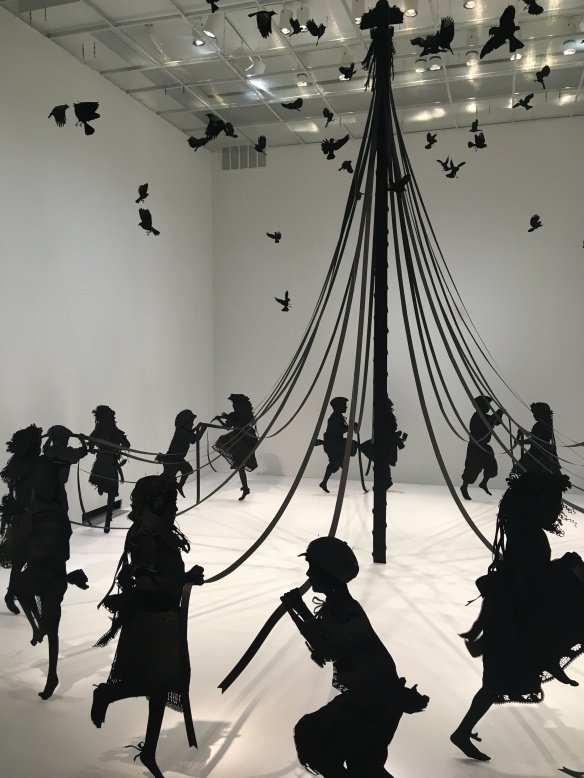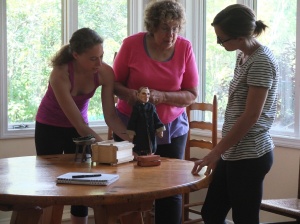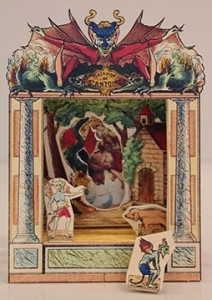In September, Wit’s End company members Cecilia Cackley and Genna Beth Davidson went up to Brattleboro, Vermont for Puppet Homecoming. This Puppeteers of American regional event was held in conjunction with Puppets in the Green Mountains, an international puppet festival organized by Sandglass Theater. In this post, Cecilia and Genna Beth have a conversation about their experiences at Puppet Homecoming.
Cecilia: Puppet Homecoming was a great experience. What shows did you find the most inspiring or interesting?
Genna Beth: Can I say all of them? Haha, each one was so different, and all were virtuosic. A Hunger Artist was just my cup of tea. I loved the cleverness of all the different puppetry styles (toy theatre, hand and rod, shadow, pure object manipulation); each one used to it’s full potential and perfectly chosen for that part of the story. And who doesn’t love the strangeness of a Kafka story? The performer was also just so amazing! Jonathan Levin basically did a one man show. So much talent! Which show was your favorite?
Cecilia: I really loved Meet Fred by Hijinx Theater in association with Blind Summit. I’ve really enjoyed the work by Blind Summit that I’ve seen in the past, but the collaboration with Hijinx and the themes of how a person with a disability navigates the world were extra powerful. I was laughing the whole time, just on the edge of crying. It really made me think.
Besides seeing the shows, we also went to some different workshops. Which ones did you do and which were the most helpful?
Genna Beth: I learned about silicone, writing grants for funding puppetry, and about race, gender, and sexuality in puppetry. Learning about silicone opened me up to new possibilities for crafting puppets, but I think the one that stimulated my mind the most was the one on race, gender and sexuality. I think everyone in the workshop was white and many talked about mistakes they’ve made with appropriation. Who should be telling what stories? And for me it raised a questions about taking on work to build puppets for stories that aren’t mine to tell. You were going to come to that workshop too but hung back at the writing grants one to talk more with that presenter individually. What did you learn?
Cecilia: I felt a lot better after that workshop, because I learned that my frustration at writing grants for puppet work is something a lot of people share! The presenter, Roxie Myhrum from Puppet Showplace Theater in Boston, had a lot of concrete tips for how to think about describing puppets in grant applications and marketing materials. I was just sorry that we took so long to get started with that one that we didn’t get through all her slides!
It sounds like we both got a lot out of this weekend in Vermont. Do you think we should go back next year? What other things would you like to try if we return?
Genna Beth: I definitely want to go back next year! We didn’t get to check out the marketplace, so next year I want to make a point of that. Also I got to speak with a few people from across the region but it was hard to find time to get to know more people. So I’d like to find a way to make more friends next year too. You?
Cecilia: I agree with all of that. I wonder if it would be easier to make friends if we performed in one of the showcases or slams. Maybe that would give us a starting point for talking to people?
Genna Beth: YES! Good idea. I think we can have something prepared for the slam next year. I’d really like to make that a goal. Perhaps my lightbulb heads puppet show about depression. But who knows, we have a whole year to figure it out.

The puppet Mr. Ruraru from the show Mr. Ruraru’s Yard by Puppet and It’s Double from Taiwan.



















